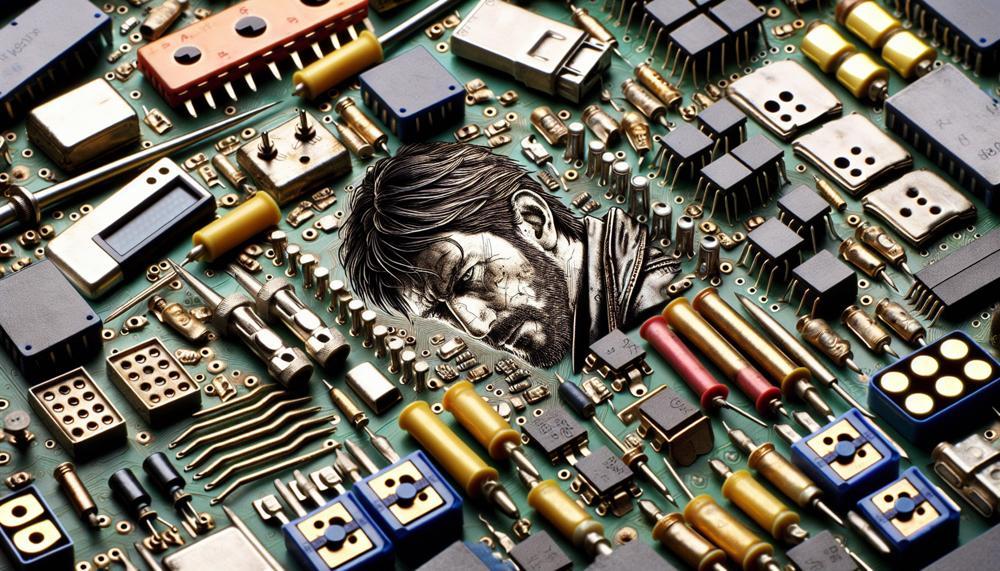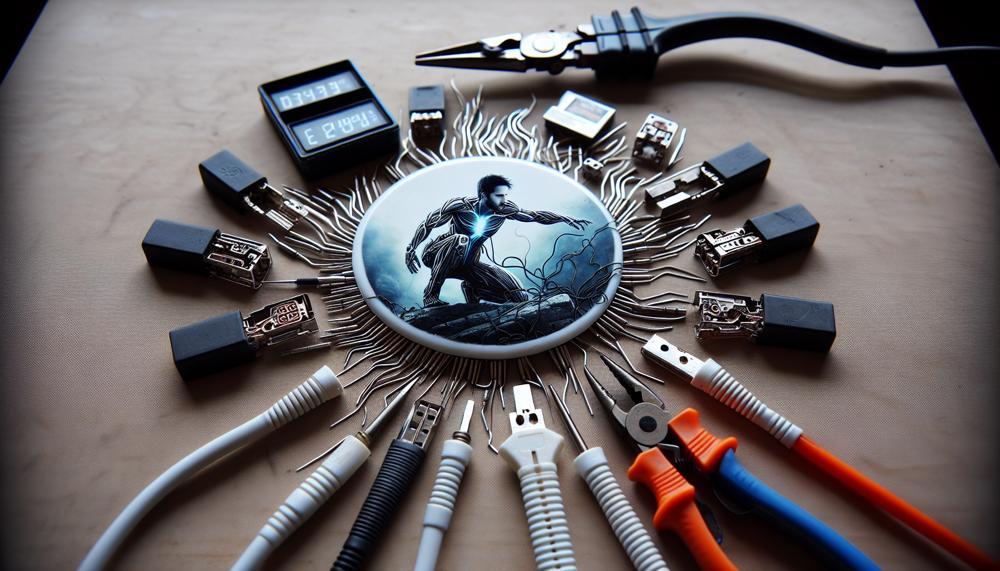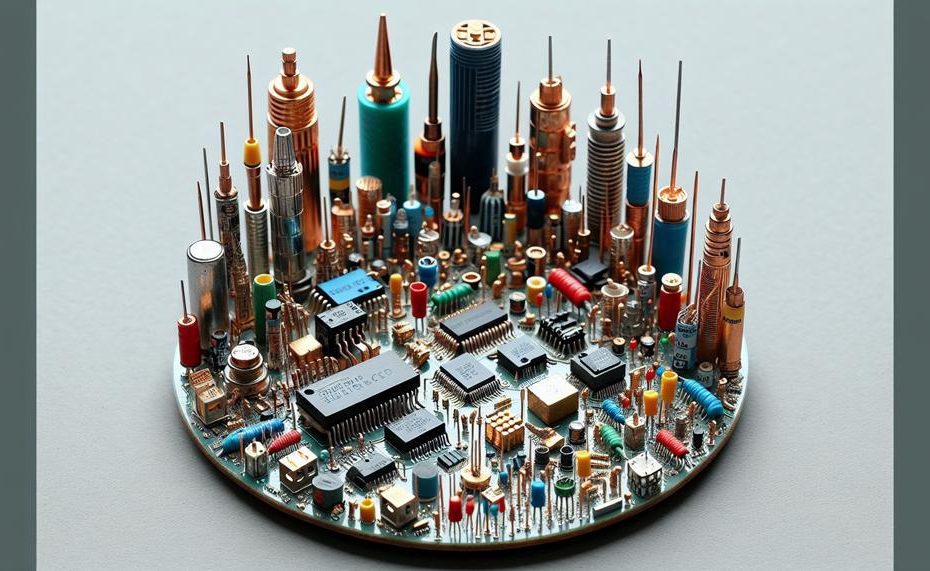Are you tired of the monotonous and time-consuming process of soldering? Are you seeking innovative and cost-effective alternatives for your DIY projects? Look no further, as we have curated a list of methods that will transform your crafting experience.
In this blog post, we will explore a variety of options to replace traditional soldering techniques, including:
- Conductive adhesive: Bid farewell to messy and tedious soldering with this user-friendly adhesive.
- Wire wrapping: A popular technique in jewelry making, wire wrapping is also an excellent substitute for soldering in electronics.
- Cold welding: This method utilizes high-pressure and low-temperature processes to bond metals together without the use of heat.
- Solderless breadboards: Perfect for prototyping and testing circuits without any permanent connections required.
- Crimp connectors: Ideal for creating secure and reliable connections without the need for heat or flux.
Join us as we delve into these alternatives and uncover how they can elevate your crafting game.
Get ready to embrace hassle-free, versatile, and budget-friendly options that will revolutionize your approach to projects.
Contents
Effective Alternatives to Soldering Electronics
When it comes to joining metal components in electronics, there are numerous alternatives that are both safe and effective.
These include using conductive adhesives, embedded components, interconnections with diamond particles, a torch or heat gun, and mechanical fasteners.
Let’s take a deeper dive into each of these methods.
- Conductive adhesives: Often used as a replacement for soldering in microelectronic assemblies, conductive adhesives offer both effectiveness and ease of use. These adhesives consist of a polymer matrix and conductive fillers such as metals or carbon, providing the necessary electrical conductivity. Thanks to advancements in nanotechnology, the performance of these adhesives has improved through more efficient filler compaction and sintering processes.
- Embedded components: This method involves embedding electronic components into a printed circuit board (PCB) through through-hole plating. It offers strong mechanical connections and excellent electrical conductivity.
- Interconnections with diamond particles: A newer technology, this method uses diamond particles to create robust interconnections between electronic components without the need for heat. It is particularly useful for high-temperature applications.
- Using a torch or heat gun: In situations where heat is necessary but soldering is not an option, a torch or heat gun can be used to melt metals together. However, this method requires caution and proper safety measures to avoid accidents.
- Mechanical fasteners: For larger electronic projects that require stronger connections, screws, bolts, and rivets provide a secure bond without the need for heat.
Materials Needed
When it comes to welding, there are many options for materials that can be used instead of traditional solder, depending on the specific project and materials being joined. These alternatives include adhesives, gels, metal clamps, and other methods such as welding or brazing.
It’s crucial to experiment and find the best method for each unique project, as some may work better than others in certain situations.
For plumbing projects, solder is essential for creating a watertight seal, but it is not suitable for use with materials like aluminum or stainless steel. In these cases, it’s recommended to use alternative methods such as welding or brazing.
However, if you’re in a pinch, materials like aluminum foil, coins, steel wool, or thin wire can also be used instead of solder.
It’s worth noting that special types of solder known as “brazing alloy” may be required when joining two different types of metals together.
For electronics work, conductive adhesives can be used in place of solder, and some projects can even be completed without solder by using electronic components and a breadboard.
However, temporary substitutes like paperclips or aluminum foil can also be used in a pinch, but they may not be as strong or durable as traditional solder.

| Material | Benefits | Drawbacks |
| Adhesives | – Simple to use – Can create a strong bond – Suitable for various materials |
– May not work on all materials – May require multiple methods for a strong connection |
| Gels | – Simple to use – Can create a strong bond – Can fill gaps between materials |
– May not work on all materials – May take longer to set and dry – Can be messy |
| Metal Clamps | – Easy to use – Can create a strong bond – Suitable for various materials |
– May not work on all materials – May require multiple methods for a strong connection – Can be more time-consuming than other methods |
| Welding | – Strong and durable bond – Suitable for various materials |
– Requires specialized equipment and training – Not recommended for use on certain materials (like aluminum or stainless steel) |
Use of Conductive Adhesives
The use of conductive adhesives has grown in popularity due to their unique properties and benefits. For example, a major advantage of conductive adhesives is their ability to bond different types of materials together.
This means that they can be used in a wide range of electronic applications, providing more flexibility in design and application than traditional soldering methods.
In addition, conductive adhesives have a lower melting temperature compared to solder, which can be beneficial when working with heat-sensitive materials. This also means that less heat is needed during the bonding process, making it a safer option for delicate electronic components.
However, it’s important to note that conductive adhesives may not always be the best choice for every electronic application. Factors such as the desired level of electrical conductivity, curing time, and bond strength all play a role in determining whether conductive adhesives are suitable or if traditional soldering methods should be used instead.
To ensure optimal performance and reliability of electronic devices, it is crucial to thoroughly test and analyze conductive adhesives before implementing them in any application. This will help determine if they meet the specific requirements and standards necessary for the intended use.
Use of Spring Contacts
Spring contacts utilize a unique method that relies on mechanical force to establish a powerful electrical connection between two surfaces. These contacts are made up of a thin strip of metal that features a curved end, acting as a spring and providing a robust and dependable connection, even in the most challenging environments.
Due to their impressive flexibility, reliability, low resistance, and cost-effectiveness, spring contacts have become the preferred alternative to solder in various applications.
The use of spring contacts can be compared to the strategy of always having a backup plan. Just like how a backup plan ensures that you are prepared for anything that may come your way, spring contacts provide a reliable and secure connection, no matter what harsh conditions they may face. This makes them an essential component in industries such as aerospace, automotive, and telecommunications.

Unlike traditional soldering methods, spring contacts offer a more versatile solution that is not limited by surface area or shape. This makes them ideal for use in complex electronic devices where space is limited. Additionally, spring contacts can withstand extreme temperatures and vibrations without affecting their performance, making them highly reliable in critical applications.
In terms of cost-effectiveness, spring contacts are an excellent choice for businesses looking to cut costs without compromising on quality. With their long lifespan and minimal maintenance requirements, they offer significant savings in the long run.
Types of Alternative Tools for Soldering
When it comes to soldering, there are several alternative tools that can be used instead of traditional methods. These include electrically conductive adhesives, assemblies with embedded components, particle interconnection technology, and various heat sources. In this section, we will explore each of these options in more detail and discuss their advantages and limitations.
Electrically Conductive Adhesives (ECAs)
ECAs are a possible alternative to solder in microelectronic assemblies. They consist of a polymer binder and conductive fillers, which can be either metals or non-metals.
What makes ECAs stand out is their ability to bond dissimilar materials at lower processing temperatures without causing thermal damage to sensitive components. However, they do have drawbacks, such as lower thermal and mechanical performance compared to solder.
Assemblies with Embedded Components
Some companies have developed innovative packaging technologies that use traditional materials in new ways. Examples include Freescale’s RCP package, Imbera’s integrated modular board, GE’s on-chip build-up technology, and Verdant’s Occam process.
These methods involve embedding components into the board, eliminating the need for traditional soldering altogether.
Particle Interconnection Technology
Particle interconnection technology is gaining popularity in industries like LED product assembly and printed electronics as an alternative to soldering. This method uses conductive particles to create a bond between two surfaces without the need for heat.
While it offers convenience and ease of use, it may not be suitable for all applications.
Heat Sources
Apart from traditional soldering irons, there are various heat sources that can be used for joining materials together.
These include torches, heat guns, homemade battery-powered devices using electric arcs or paperclips heated with a lighter, and special alloys containing lead and tin that can be used without a soldering iron by prepping the surface with chloride zinc.
When choosing an alternative to soldering, it is important to consider factors such as project needs, material compatibility, cost savings versus drawbacks, ease of use, and environmental impact.
How to Create A Soldering Iron Using a Lighter
Making a soldering iron using a lighter can be a practical option. Follow this step-by-step guide on how to create a soldering iron using a lighter:
- Gather materials: The necessary materials for this DIY project are copper wire, electrical tape, and a lighter.
- Cut the wire: Begin by cutting the copper wire into three equal parts, using wire cutters or scissors.
- Shape one piece: Twist one of the wire pieces into the form of an iron, leaving enough length at the end to attach it to the lighter.
- Attach the remaining pieces: Use electrical tape to fasten the remaining two wire pieces to the sides of the lighter, acting as handles for your soldering iron.
- Test your creation: Once everything is securely attached, test your soldering iron by lighting the lighter and touching the twisted wire end to see if it heats up.
- Prioritize safety: When working with lighters and DIY projects, taking proper safety precautions is crucial. Always wear protective gear such as gloves and safety glasses and have a fire extinguisher nearby.
- Ready for repairs: With your homemade soldering iron, you can now perform small repairs on electronic devices or other DIY projects.
So, making a soldering iron using a lighter is possible and can be an enjoyable DIY project for those with some experience in such activities.
Conclusion
In summary, soldering can be a tedious and time-consuming process, prompting many DIY enthusiasts to seek out more innovative alternatives.
In this article, we have explored a variety of methods that can replace traditional soldering techniques, such as conductive adhesive, wire wrapping, cold welding, solderless breadboards, and crimp connectors.
These alternatives offer hassle-free and budget-friendly options that can enhance your crafting experience.
When considering an alternative to soldering, it’s crucial to take into account factors such as project requirements, material compatibility, cost-effectiveness versus drawbacks, ease of use, and environmental impact.





